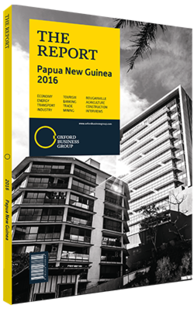OBG talks to Tony Honey, Managing Director, PNG Forest Products: Interview

Interview: Tony Honey
Considering the country’s abundance of river systems, how can the Papua New Guinea energy sector tap into its potential for hydropower?
TONY HONEY: What the industry needs at the moment is a more comprehensive approach when it comes to preliminary studies to assess the country’s hydro-power potential. Of course PNG is endowed with plenty of river systems, but not every one of them is suitable for hydropower. Unfortunately, preliminary studies are too expensive at the moment as they are normally conducted by a few international companies operating in the local market. That is hindering the growth of the industry, as far as I am concerned, as hydropower generation is much cheaper than diesel and even biomass, which requires a much longer cycle during which you have to plant, grow and harvest the resource. Somehow, the perception persists in the market that hydropower projects are extremely difficult to implement. However, after having kick-started the first privately owned plant in PNG we know that this is not true. Again what the industry needs is an affordable desktop study for each project, which includes assessing the water flow and head, and a study on the terrain to best position the power plant. This can be done professionally and fairly quickly, which could spearhead the growth of the industry in my opinion.
To what extent could the current drought be a deterrent to growth in the hydropower industry?
HONEY: Certainly the current dry spell that is effecting PNG is a concern, but this is a phenomenon that has predominantly affected the southern area of the country, specifically Port Moresby, where El Niño has been felt the strongest. For instance, our hydro-power plant in Bulolo, located in Morobe Province, has been running at 70% of its capacity. I believe that when the river runs at 50% of its capacity, which is not ideal, it would be enough to at least service the debt, considering the present cost structure. Anybody interested in investing in the industry, though, should think long-term, as these kinds of dramatic situations are likely to happen every seven to 10 years if we go by historical records, even though most of the country has gone back to normality.
What is the real potential of hydropower generation in PNG, and which provinces offer the best opportunities for the future?
HONEY: One of the first things that anyone would notice when flying over PNG is the abundance of rivers as well as the very high peaks that characterise the landscape – not only on the mainland, but also on the island provinces – which offer optimal conditions for hydropower generation. It is in fact quite surprising that the industry has not contributed even more than it does already, especially considering that the demand for power already exceeds supply in PNG. Having said that, I believe that there is great potential for small size hydropower plants in this country that could produce anywhere between 10 and 15 MW and could offer great support to vital industries like mining, as well as feeding into the grid.
Over the last few years we have seen the government moving more decisively towards hydropower expansion through the help of public-private partnerships. However, we wish that the process would be more agile than it is at the moment, especially because the country is going through a process of consolidation before the next wave of energy projects, including the Total-led PNG liquefied natural gas (LNG) project, which is expected to have a major effect on the local economy. As we have seen before during the construction of the ExxonMobil-led PNG LNG project, prices are likely to escalate again, and a feasibility study conducted today will not be relevant in a couple years time, which seems to be the normal amount of time needed to award a new project.
You have reached the limit of premium articles you can view for free.
Choose from the options below to purchase print or digital editions of our Reports. You can also purchase a website subscription giving you unlimited access to all of our Reports online for 12 months.
If you have already purchased this Report or have a website subscription, please login to continue.

